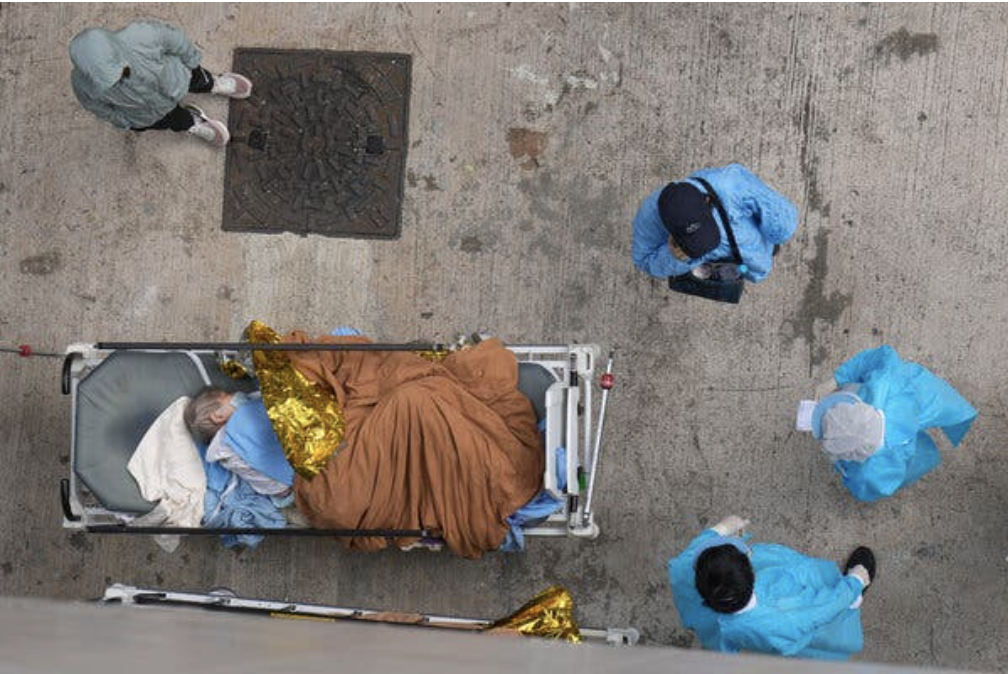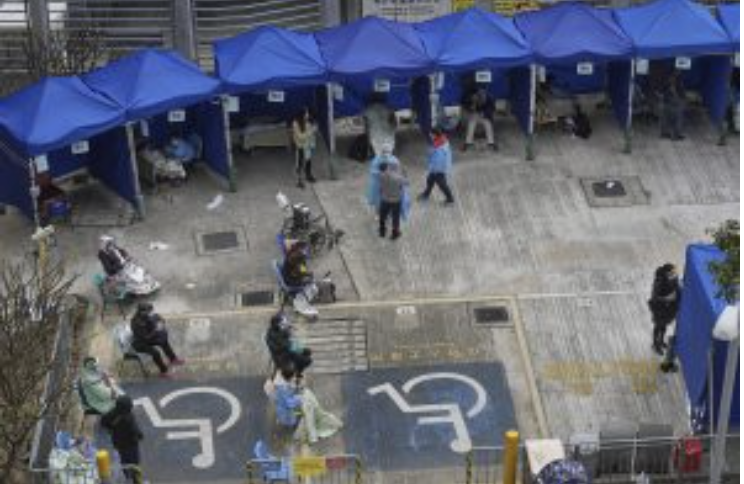Hong Kong’s COVID Surge Shows the Adverse Impact of “Zero COVID”
A patient awaits treatment outside a hospital. Photo: Vincent Yu / New York Times
Hong Kong has recorded its highest number of daily COVID-19 cases since the pandemic began in 2020. Prior to last week, the city had only reached a peak of 2,000 daily cases. Now, that figure stands at 3,600 and counting as a surge of Omicron spreads through the population. Patients have been forced to wait on hospital sidewalks for treatment, isolation facilities are overcrowded, and testing lines stretch hours. The surge has been considered a consequence of China’s “zero COVID” policy, which urged elimination of the virus as opposed to mitigation.
The Omicron variant all but negates the city’s previous strong record against COVID-19 infections, as cases have reached a 60-fold increase during February. The city’s chief executive, Carrie Lam, stated that the current situation has “outgrown our capacity.” Strict pandemic policies had limited infections to roughly 40,000 with 259 deaths, but the “zero-COVID” approach has now contributed to the current spike.
China’s negative framing and policy surrounding COVID-19 has adversely impacted vaccination rates, and the declaration “zero COVID” has encouraged complacency and false hope among elderly residents that the virus will completely dissipate. Sixty percent of residents over age 80 have not been fully vaccinated, and the city’s test and trace system has not prioritized high risk groups.
By sticking to goals of elimination rather than mitigation, Hong Kong’s resources have been poorly allocated and stretched thin. Under “zero COVID,” authorities closed borders and even hospitalized asymptomatic people who had tested positive. The high transmissibility of Omicron, coupled with the current Chinese policy, has overwhelmed the city’s health care system.
Though Hong Kong is a semi-autonomous Chinese city, it has been largely unable to adopt a “living with COVID” policy because of mainland pressure. For residents in mainland China, this strategy has resulted in total lockdowns, extensive invasive contact tracing, and mass testing.
Lam has used the same approach, despite the geographical and cultural differences in Hong Kong, and the frustration among the public regarding Beijing’s overreach. The current wave prompted Chinese premier Xi Jinping to urge Hong Kong’s leaders to “take all necessary measures” to stop the outbreak.
People showing symptoms wait in a holding area outside of a hospital. Photo: Vincent Yu / Diplomat
Imposing a complete lockdown in Hong Kong could trigger mass public anger in a city with a preexisting deep mistrust of the Chinese government. Widespread privacy concerns have deterred the city government from introducing contact-tracing apps that could be considered surveillance. These tools could be useful however, and some experts argue that political debate has overshadowed the medical reality.
The lack of resources has forced Hong Kong to transition to more moderate policies in line with a “dynamic zero COVID” approach. Residents that test positive and have mild to no symptoms no longer require hospitalization, and can instead isolate at a facility or at home.
To alleviate overcrowding at isolation centers, other spaces including hotel rooms, sports facilities, and public housing units will be used to house patients. The central Chinese government also plans to provide resources such as rapid antigen tests, medical expertise, and supplies.
Under these conditions, Hong Kong will slowly be forced to decrease its reliance on “zero COVID” in favor of mitigation efforts. The city-state of Singapore has seen a similar rise in Omicron cases, however stress on its health care system has been far less severe.
Hong Kong’s ability to do so will be impacted by both pressure from mainland China and efforts to restore trust with the public.


